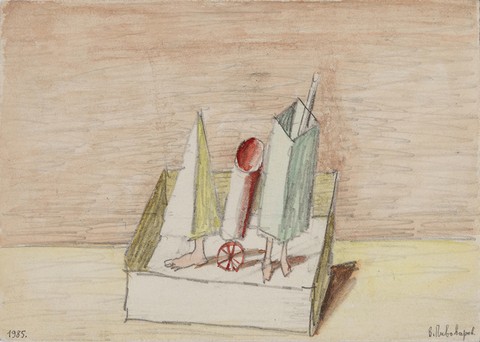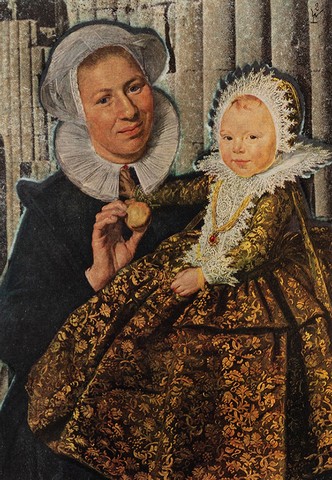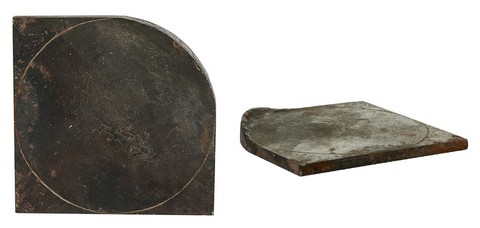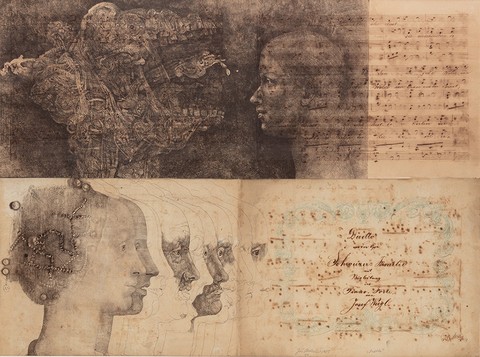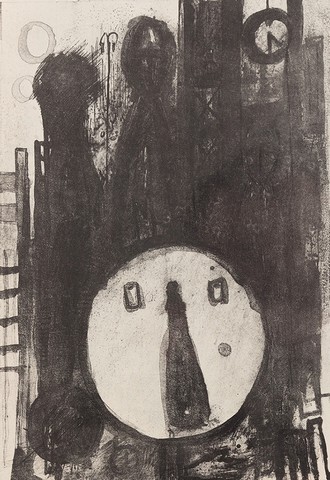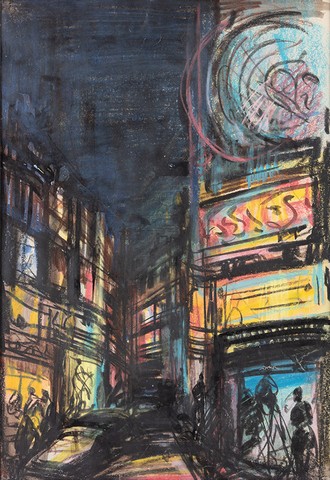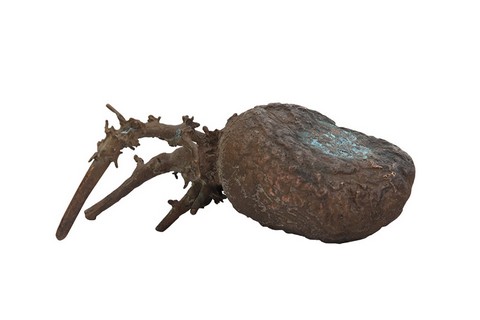Auction house
>
FINE ART
>
Untitled, 1985
‹ BACK
>>
"Provenance: obtained from the artist's studio. The protagonists of conceptualism in the West rejected the painting as an outdated art form. Russian conceptualists, for a number of reasons, preserved the image, albeit in a reformed form. It seems to me, I cannot say for sure, that sololite and enamel paints were not used for painting purposes in this country before Kabakov. In any case, Russian conceptual painting began to use the forms of street banners, i.e., the form of didactic informative or propagandistic, non-art object. At the "House of Creation Senezh", where we often worked, they once appointed a retired general as director. The first thing he did when he took office was to order the erection of boards in various places with long quotations from the latest resolutions of the Central Committee and from the speeches of the General Secretary. These boards appeared in the most unexpected places, not only in the interiors of the House of Creation, but also, for example, by the lake or in the forest. Andrei Monastyrsky, who later, together with the Collective Action group, put up a banner at the edge of the forest with the inscription "I AM NOT IN ANY WAY AND I LIKE EVERYTHING, EVEN THOUGH I HAVE NEVER BEEN HERE AND I KNOW NOTHING ABOUT THESE PLACES", was, of course, unaware of the experiments of this general avant-gardist. Personally, I was decisively influenced by the warning signs that can still be seen at railway stations around Moscow. I am referring to such placards where a man is painted crossing the tracks and a train is rushing towards him. The picture is accompanied by the text: 'What is more precious to you, your life or the minute you save ' Sometimes, instead of a man with a briefcase, such signs depict a girl with braids and the text reads: "Don't cross the tracks!" In the wide variety of genres of such warning boards, the high quality of these signs was mainly characterised by fire-resistant ones. The image is always, even in a consciously flat conception, as in Mondrian's, a complex interior space. The spatiality of the image is completed by the frame, which creates the effect of a window behind which something is happening. The board, by contrast, is flat from the start, even though it depicts a spatial object it does not show what is BEHIND it, but what is OVER it. The conceptual image, which uses the aesthetic properties of such a board, is thus not turned inward towards itself, but outward, towards other images and also towards problems not directly related to the images. Viktor Pivovarov, 1996 Lit.: Viktor Pivovarov, Sonia and the Angels: exhibition catalogue 14 March - 26 May 1996, Scrapbook No. 3, Prague: Galerie Rudolfinum, 1996, pp. 43-44. Photo from"
Pivovarov Viktor *1937
Untitled, 1985
Pencil, watercolour, paper, frame, glass, 10,3 × 14,7 cm, signed. PD V. Pivovarov."Provenance: obtained from the artist's studio. The protagonists of conceptualism in the West rejected the painting as an outdated art form. Russian conceptualists, for a number of reasons, preserved the image, albeit in a reformed form. It seems to me, I cannot say for sure, that sololite and enamel paints were not used for painting purposes in this country before Kabakov. In any case, Russian conceptual painting began to use the forms of street banners, i.e., the form of didactic informative or propagandistic, non-art object. At the "House of Creation Senezh", where we often worked, they once appointed a retired general as director. The first thing he did when he took office was to order the erection of boards in various places with long quotations from the latest resolutions of the Central Committee and from the speeches of the General Secretary. These boards appeared in the most unexpected places, not only in the interiors of the House of Creation, but also, for example, by the lake or in the forest. Andrei Monastyrsky, who later, together with the Collective Action group, put up a banner at the edge of the forest with the inscription "I AM NOT IN ANY WAY AND I LIKE EVERYTHING, EVEN THOUGH I HAVE NEVER BEEN HERE AND I KNOW NOTHING ABOUT THESE PLACES", was, of course, unaware of the experiments of this general avant-gardist. Personally, I was decisively influenced by the warning signs that can still be seen at railway stations around Moscow. I am referring to such placards where a man is painted crossing the tracks and a train is rushing towards him. The picture is accompanied by the text: 'What is more precious to you, your life or the minute you save ' Sometimes, instead of a man with a briefcase, such signs depict a girl with braids and the text reads: "Don't cross the tracks!" In the wide variety of genres of such warning boards, the high quality of these signs was mainly characterised by fire-resistant ones. The image is always, even in a consciously flat conception, as in Mondrian's, a complex interior space. The spatiality of the image is completed by the frame, which creates the effect of a window behind which something is happening. The board, by contrast, is flat from the start, even though it depicts a spatial object it does not show what is BEHIND it, but what is OVER it. The conceptual image, which uses the aesthetic properties of such a board, is thus not turned inward towards itself, but outward, towards other images and also towards problems not directly related to the images. Viktor Pivovarov, 1996 Lit.: Viktor Pivovarov, Sonia and the Angels: exhibition catalogue 14 March - 26 May 1996, Scrapbook No. 3, Prague: Galerie Rudolfinum, 1996, pp. 43-44. Photo from"
5
auction 59
starting price 16 000 CZK € 629
hammer price 26 000 CZK
starting price 16 000 CZK € 629
hammer price 26 000 CZK
Other items
cat. n.40
auction: 66
34 000 CZK / 1 336 €
starting price:
38 000 CZK
hammer price:




